EndNote X8 is Now Available
EndNote X8 is now available for PolyU users! Download now!
What's New
Support for the latest OS
EndNote X8 is fully compatible with the latest operating system including Windows 10 and Macintosh OS Sierra.
Enhanced library sharing function
Full library sharing with up to 100 EndNote users. You can also keep track of changes made to the shared library from the new built-in activity log.
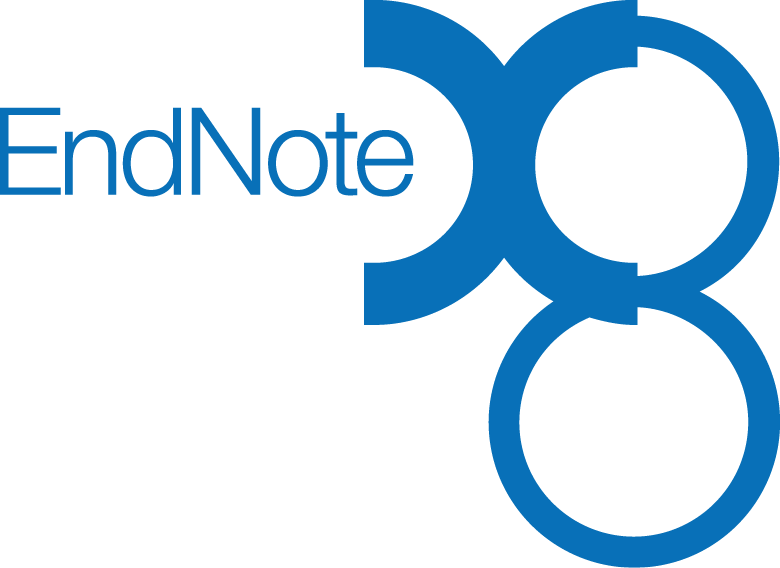
EndNote is a powerful reference management tool to help you collect, organize and share your references, thus improving your efficiency in academic paper writing. Explore how EndNote can help you from our webpage or contact any of our helpful librarians.
Find the Right Journal to Publish Your Work
To publish a journal article, the first step is to select an appropriate journal. It is a good practice to identify one journal you want to submit your manuscript to before you start writing. Visit our newly published Libguides - Quick Guide for Journal Selection (Available on Library homepage under Guides & Tutorials > Researchers@Library > Where to Publish) to know more about how to select the right journal for publishing your work. Contact us if you need assistance from a librarian.
Check whether the journal is a good one within a subject area
To evaluate a journal in a specific area, we usually use metrics called Journal Impact Factor. Visit this guide to learn how to find a journal’s Impact Factor in Journal Citation Reports.
However, not every journal has an Impact Factor. To evaluate journals in a field such as social science and humanities, you may need to use more than one metrics, e.g., SNIP (Source Normalized Impact per Paper), SJR (SCImago Journal Rank) or newly launched CiteScore. The first two metrics allow you to compare journals across different subject fields. Visit this guide to know how to find SNIP and SJR in Scopus. To learn more about CiteScore, click here.
To evaluate a journal in a specific area, we usually use metrics called Journal Impact Factor. Visit this guide to learn how to find a journal’s Impact Factor in Journal Citation Reports.
However, not every journal has an Impact Factor. To evaluate journals in a field such as social science and humanities, you may need to use more than one metrics, e.g., SNIP (Source Normalized Impact per Paper), SJR (SCImago Journal Rank) or newly launched CiteScore. The first two metrics allow you to compare journals across different subject fields. Visit this guide to know how to find SNIP and SJR in Scopus. To learn more about CiteScore, click here.
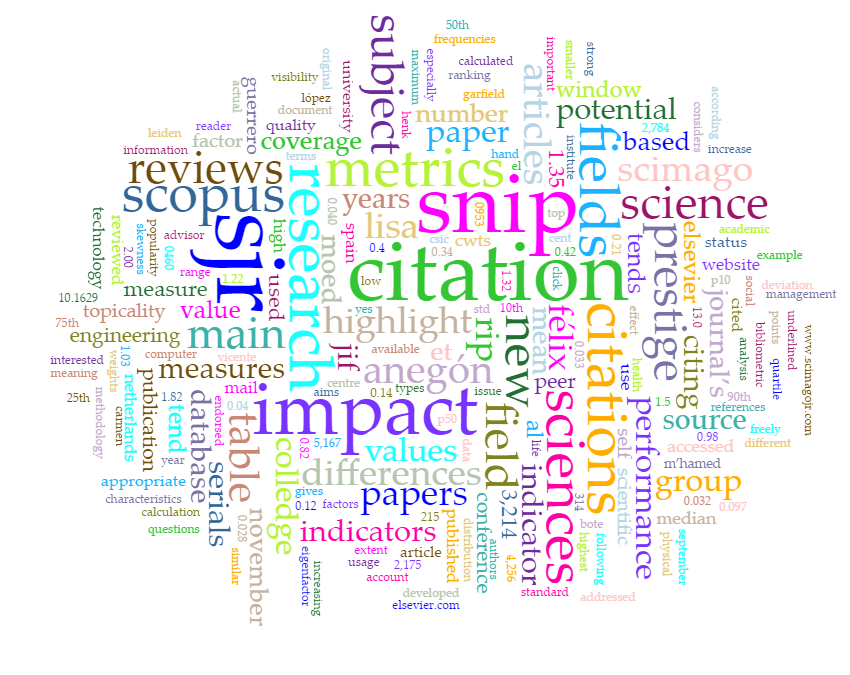
Auto journal pick-up tools from publishers
Some publishers also provide handy tools for picking up the best fit journals automatically. By typing in the title, abstract, or keywords of your paper, the tool will generate a list of best fit journals for your manuscript. Note that most publishers' journal suggesters will only recommend their journals within their own portfolio.
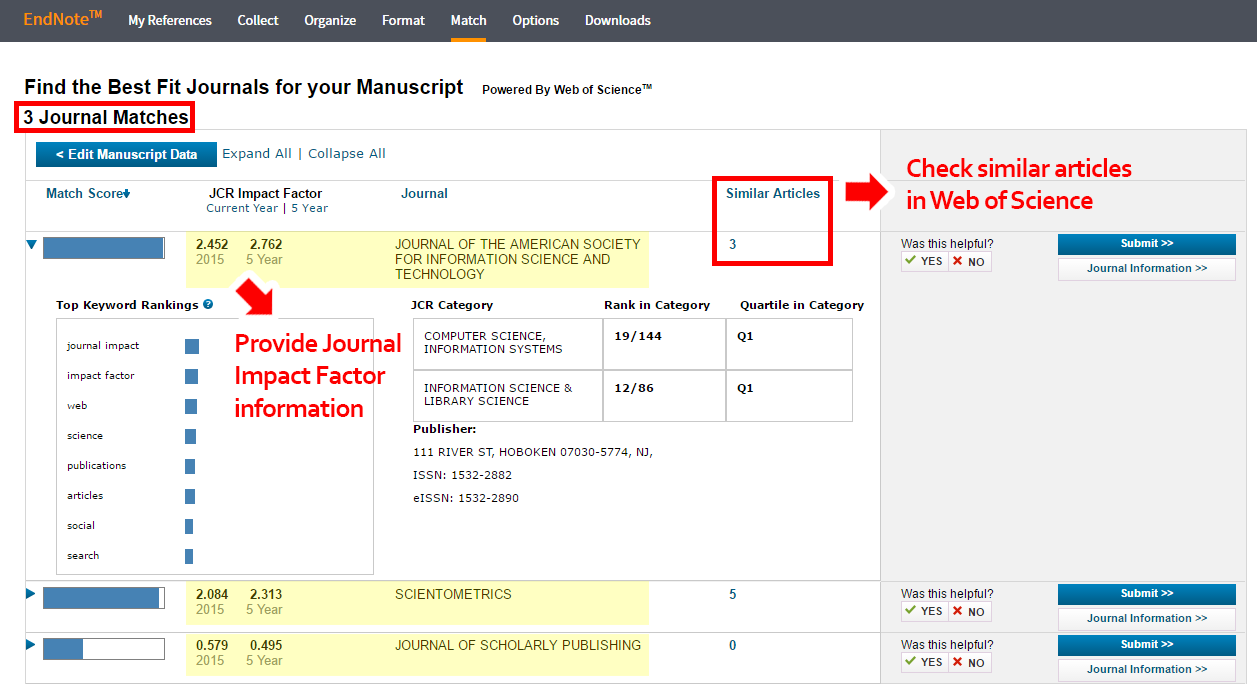
EndNote online version also provides a function to help you find the most suited journal in Web of Science. Before using this function, you need to register an account for EndNote Web. After login, click on the "Match" tab and input a few pieces of your manuscript. The results allow you to check the Impact Factor of the matched journals, and also similar articles to your manuscript.
Make Altmetrics Work for You
What are Altmetrics?
Altmetrics, also known as alternative metrics, are increasingly used to capture the amount of online activity for a scientific output e.g. the number of “tweets” a work has received, the number of times a work is mentioned in LinkedIn and Wikipedia, and the number of downloads in Mendeley. It is viewed as a way to measure the immediate impact and influence of a work.
Altmetrics, also known as alternative metrics, are increasingly used to capture the amount of online activity for a scientific output e.g. the number of “tweets” a work has received, the number of times a work is mentioned in LinkedIn and Wikipedia, and the number of downloads in Mendeley. It is viewed as a way to measure the immediate impact and influence of a work.
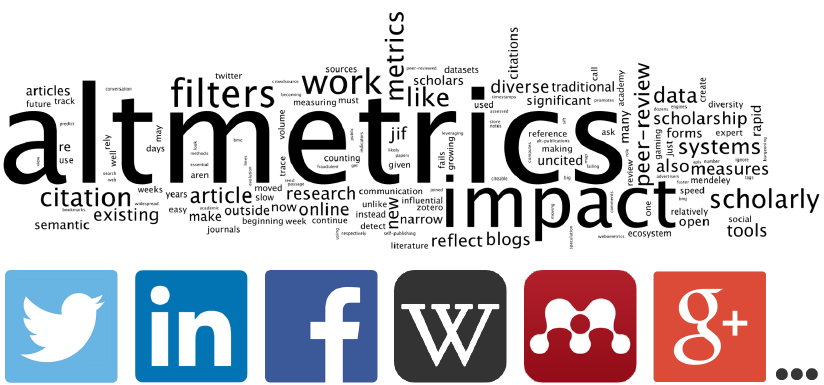 Altmetrics word cloud by AJ Cann. Licensed CC BY SA 2.0.
Altmetrics word cloud by AJ Cann. Licensed CC BY SA 2.0.Benefits of Altmetrics
- Timely
Altmetrics are generated and gathered immediately after a work gets shared on an online sphere, while core citation metrics such as citation counts take time to accumulate.
- Diverse
Altmetrics capture data from a variety of sources, including social media such as Twitter, Facebook and Google+; multimedia platforms such as YouTube and Slideshare; Wikipedia; blogs and online reference management tool - Mendeley, while core citation metrics are confined to the traditional academic publishing setting.
- Not Just Citations
Apart from quantitative data such as the number of Tweets and the number of shares on Facebook, opinions of readers can also be viewed thus quantifying the engagement and scholarly conversation on social media.
Altmetrics Tools
Major tools include Altmetric.com, PlumX and Impactstory. Altmetrics data is also available for some research outputs in PolyU Institutional Research Archive (see an example here). Some databases and journal publishers such as Scopus, SpringerLink and PLOS also provide altmetrics data for articles indexed in respective databases. Visit this guide on altmetrics and learn more about the emerging way of measuring impact of research and the way to capture the metrics.

Highly Cited Papers by PolyU Researchers for 2016
Highly cited papers are defined as the papers that rank in the top 1% by citations for their field and publication year in Web of Science. The Highly Cited Threshold reveals the number of citations a paper should receive to be listed as a highly cited paper, and this number varies across different subject fields and publication years. Highly cited papers can be identified using Essential Science Indicators (ESI), an analytical tool to determine the influential individuals, papers, publications, etc. in a field of study based on a 10-year rolling data.
The list below shows top 10 highly cited papers published by PolyU researchers for 2016.
The list below shows top 10 highly cited papers published by PolyU researchers for 2016.
Top 10 Highly Cited Papers by PolyU Researchers for 2016
- Physico-chemical treatment techniques for wastewater laden with heavy metals
by Kurniawan, TA; Chan, GYS; Lo, WH; Babel, S - Deep Ultraviolet Photoluminescence of Water-Soluble Self-Passivated Graphene Quantum Dots
by Tang, Libin; Ji, Rongbin; Cao, Xiangke; Lin, Jingyu; Jiang, Hongxing; Li, Xueming; Teng, Kar Seng; Luk, Chi Man; Zeng, Songjun; Hao, Jianhua; Lau, Shu Ping - General tensor discriminant analysis and Gabor features for gait recognition
by Tao, Dacheng; Li, Xuelong; Wu, Xindong; Maybank, Stephen J. - A survey of scheduling problems with setup times or costs
by Allahverdi, Ali; Ng, C. T.; Cheng, T. C. E.; Kovalyov, Mikhail Y. - Ionic-liquid-supported synthesis: A novel liquid-phase strategy for organic synthesis
by Miao, Weishi; Chan, Tak Hang - FSIM: A Feature Similarity Index for Image Quality Assessment
by Zhang, Lin; Zhang, Lei; Mou, Xuanqin; Zhang, David - Organocatalysis in Cross-Coupling: DMEDA-Catalyzed Direct C-H Arylation of Unactivated Benzene
by Liu, Wei; Cao, Hao; Zhang, Hua; Zhang, Heng; Chung, Kin Ho; He, Chuan; Wang, Haibo; Kwong, Fuk Yee; Lei, Aiwen - G-quadruplexes: Targets in anticancer drug design
by Ou, Tian-miao; Lu, Yu-jing; Tan, Jia-heng; Huang, Zhi-shu; Wong, Kwok-Yin; Gu, Lian-quan - Polymer membranes for high temperature proton exchange membrane fuel cell: Recent advances and challenges
by Bose, Saswata; Kuila, Tapas; Thi Xuan Lien Nguyen; Kim, Nam Hoon; Lau, Kin-tak; Lee, Joong Hee - Structural transformation and ferroelectromagnetic behavior in single-phase Bi1-xNdxFeO3 multiferroic ceramics
by Yuan, G. L.; Or, Siu Wing; Liu, J. M.; Liu, Z. G.
Feel free to explore the highly cited articles via our PolyU IRA platform. The screen on the right shows an article in PolyU IRA and the additional information about the article.
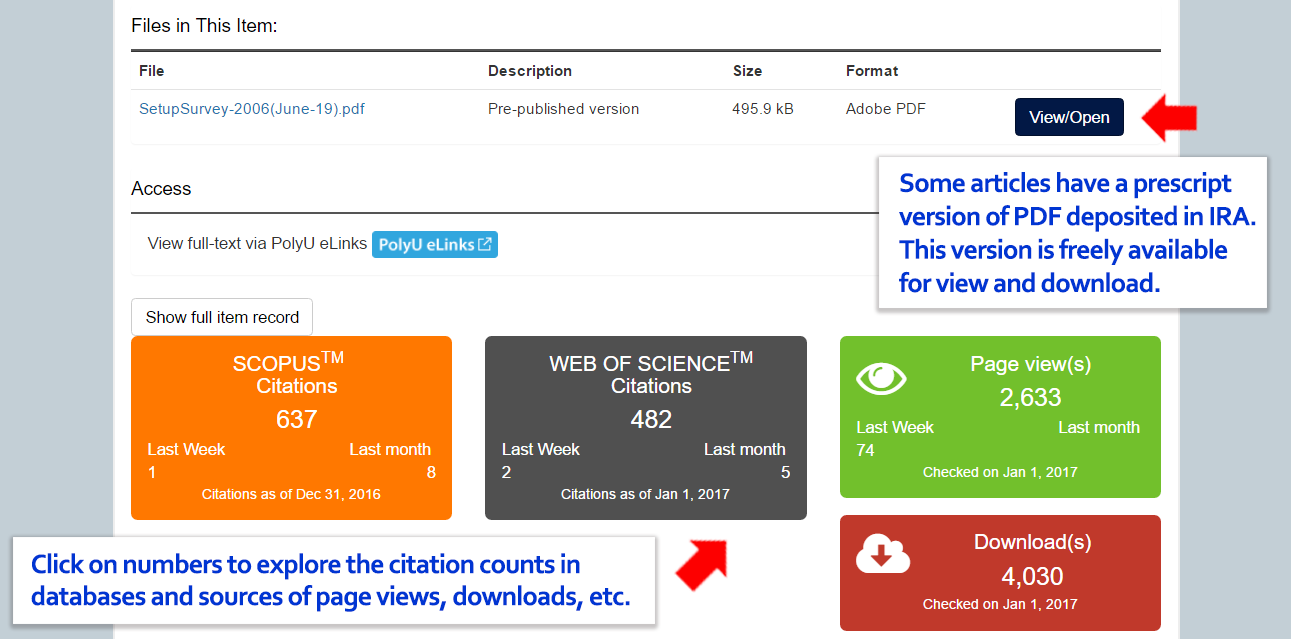



 PolyU Library AI Chatbot
PolyU Library AI Chatbot